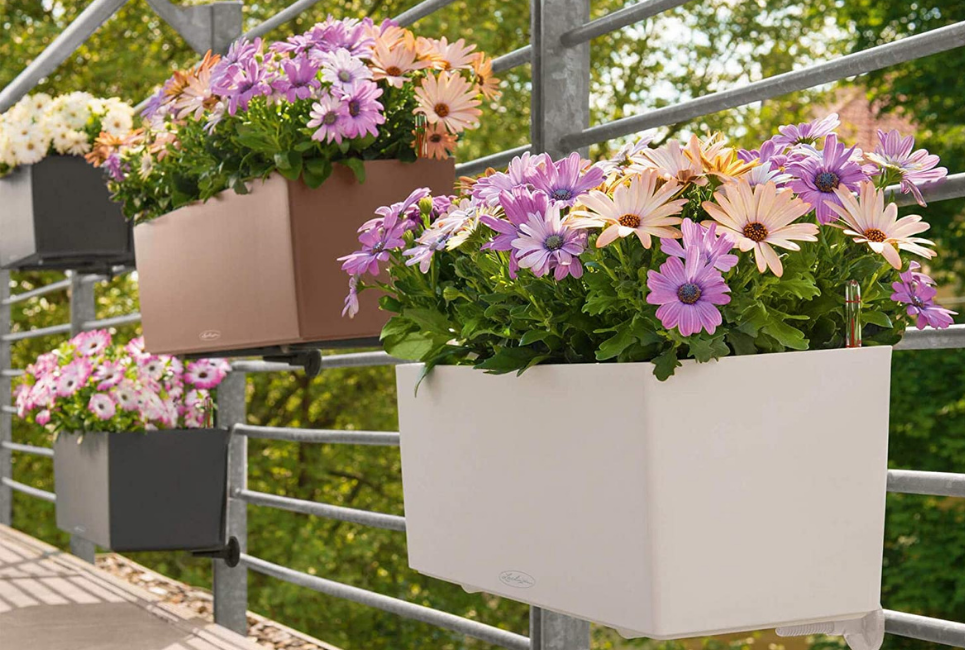- 11 Best Long Planter Boxes to Enhance Your Garden With - January 5, 2024
- Best Bulb Planters That You Should Consider for Your Garden - January 5, 2024
- Best Fiberglass Planters That Will Look Marvelous In Your Home - December 31, 2023
How many times have you gone on a vacation and come home heartbroken to see your plants all brown and wilted? If you had a sub-irrigated planter, you could have saved your plant from an untimely demise and yourself from heartbreak.
Sub-irrigated planters supply plants with consistent moisture, so they are healthier without requiring you to keep a detailed watering schedule. You practically get livelier and greener plants that bear more fruits and produce more blooms without doing too much.
What do you need to keep in mind about these planters? And how do you best use them to your advantage? We’ll tell you, just keep reading. We’d also show you how to make a DIY sub-irrigated planter.
What are Sub-Irrigated Planters, Anyway?
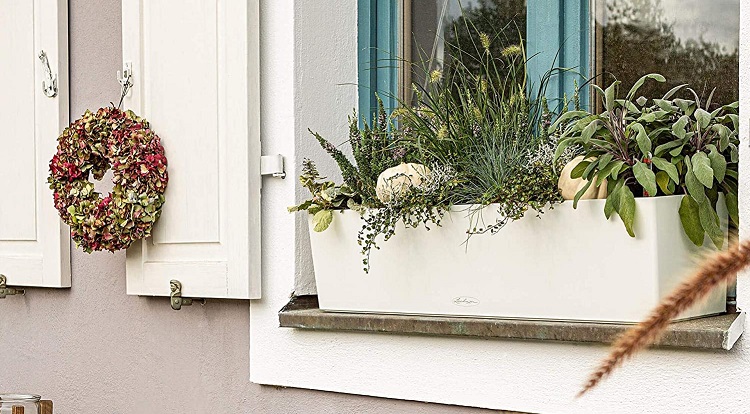
Most have grown accustomed to the notion that when we need water for our plants, we would have to get the garden hose and give them a thorough soak. If you’re growing indoor plants, it’s best to work with a watering can.
But watering can be a tedious chore if you have a lot of square footage containing many plants. Some of us simply won’t have the time to constantly water our plants or even remember when they need it. Plus, it can waste a lot of water.
Good thing that there are sub-irrigated planters that you can use for your plants. Sub-irrigation is where you pour water into a water reservoir underneath your plants. A wicking basket or cord will pull the water up when the soil starts to die.
The whole thing works because of capillary action, or the movement of water along with small spaces of something porous. Because of the many properties of water, it goes up from the reservoir to the soil. In another type of sub-irrigated planters, the holes underneath the container that hold the growing medium and their plants are big enough for the roots to poke through, allowing them to get direct access to the water.
Benefits of Sub-Irrigated Planters
Sub-irrigated planters keep the growing medium of your plants consistently moist without drowning it. So your plants are healthier.
Because there is an aeration area between the water and the growing medium, there’s no risk of root rot, as well. However, the most significant benefit of sub-irrigated planters is that it frees you from having to water your plants constantly to keep them alive.
Sub-irrigated planters can store water in their reservoirs and take it up when the soil begins to dry out. You don’t have to keep on watering your plants to ensure that they have enough moisture to be healthy.
And because you’re not watering as frequently, you get to avoid wasting water too much. Did you know that inefficient watering methods waste up to 50 percent of the water you use? The water is also not evaporating during hotter days.
If you’ve ever wanted plants, but you’re too busy or forgetful to keep up with the watering requirements, then this planter is perfect for you. And there is no risk of overwatering or underwatering your plant, and you can just leave it be.
How Do Sub-Irrigated Planters Work?

Several components are used in sub-irrigated planters. And each one contributes to you having healthy plants and prevent root rots and other problems. To know how the planter works, you will need to be familiar with these components.
Water Tight Container
Apart from the holding potting mix, the sub-irrigated planter will also hold water at the bottom. Make sure the container is water-tight.
Using porous materials, such as unglazed ceramics, will defeat the purpose of using sub-irrigated planters to conserve water. The water you put will just seep out of the pores, or worse, it will make the potting mix wetter than it should be.
This container will be divided into the water reservoir and the part that contains the soil.
Potting Mix
Coconut coir or peat-based potting mix is recommended for sub-irrigated planters. You should mix the potting mix with organic and inorganic elements to make it more lightweight and better draining.
Some of the readily available potting mixes you can try:
Burpee 8-quart organic and seed starting mix. Ideal growing media for starting plants and vegetables. Simply add water and mix. Excellent soil alternative, promotes healthy roots. 100% biodegradable mix made from plants and natural coconut fiber.
Fox Farm Bush Doctor Coco Loco Potting Soil | Amazon
Coco Coir Perlite Mix: Our natural planting soil is hydrated, buffered and comes in a convenient coco coir perlite bulk bag. Use the versatile coco perlite mix with herbs, vegetables, flowers and more!
Mother Earth® Coco + Perlite is a plant growing media that is a great alternative to potting soil and other traditional growing medias. Coconut coir is made from the fiber and pith of coconut husks and is an alternative to peat-based medias.
These potting mix products are well-draining, lightweight, and just the ideal growing media that you can use with your sub-irrigated planters.
Water Reservoir

The water reservoir is at the bottom of the container. It holds both the water you pour into the filling tube, which is usually a PVC pipe or water bottle.
The reservoir will also catch the rainwater that is collected when it rains.
Aeration Screen and Overflow Outlet
The trick to prevent your plants from developing root rot is to ensure that there is enough air in your container. You can use a corrugated drain pipe with holes punched in. Or you can use plastic containers with holes at the bottom.
Just below the screen, you should put in an overflow drain outlet that will ensure that the water doesn’t touch the aeration screen and drown out its roots.
Wicking Medium
Lastly, you have the wicking basket that will stand in the water and into the potting medium. This basket will contain potting mix, as well. As the growing medium becomes drier, the wet potting mixture in the wicking basket will provide your plants with the much-needed moisture. You can also use a polyester cord or cloth as a wick.
What Happens Inside Your Sub-Irrigated Planter?
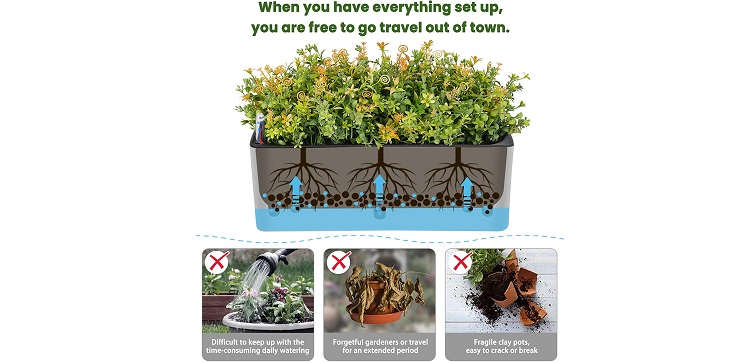
The planter is divided into two chambers: the one where you put in the growing medium or soil for your plants and the water reservoir. Depending on the type of planter you have, a sub-irrigated planter either: Brings water up the growing medium by way of the wicking basket or cloth. Allows your plants’ roots to get into the water reservoir for more direct access to moisture.
Using a sub-irrigated planter ensures that water is being introduced into the soil when it starts to get dry. As such, the planter makes sure that your plants have steady and continuous moisture for as long as you top up the water reservoir.
How to Create Your Own Sub-Irrigated Planter
There is no better way to appreciate what these components do except to create your own sub-irrigated planter. This page gives you written instructions on how to go DIY for your planter.
And here’s an even easier one that will cost you only $10.
Do Sub-Irrigated Planters Work?
Now we know that your main concern is whether this kind of planter works to keep your plants healthy. We all know the problem when the soil is too wet or when your plant’s roots are standing in water.
A study on wicking beds, which also brings water to the soil via capillary rise, shows that it works just as well as watering your plants the usual way. In some cases, tomatoes grown in a wicking bed have better fruits and more fruits than those watered from the surface.
On top of that, wicking beds also required less frequent watering, which means that it’s more efficient in using water. You also save time because you can do away with watering for a far longer time than surface watering.
It also lessens the runoff when you water your plants. You can get additional conservation when there’s a lot of rain, and it catches the rainwater in its reservoir. In conventional pots, that rainwater would just go out of the drainage holes at the bottom.
The Best Sub-Irrigated Planters: How Do You Choose?
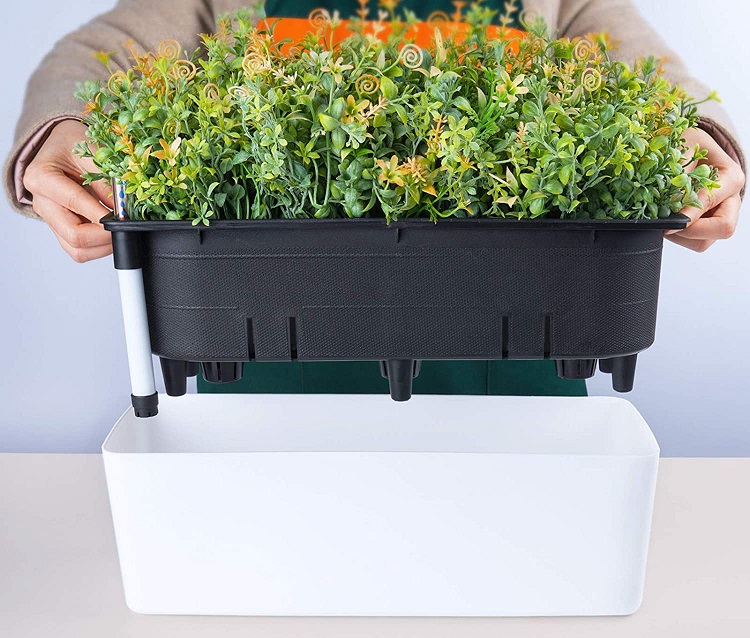
Most people looking for sub-irrigated planters often choose the one that looks beautiful or is affordable and within their budgets. These are important criteria, but your buying considerations should not end there.
What should be on the top of your list is the capacity and the surface area of the soil to put in a sub-irrigated planter. The depth of the potting mix it can hold will pretty much determine what kind of plants and vegetables you can grow in it.
For instance, if you’re planning to grow sunflowers, you will need a very tall planter to accommodate its long taproot. Or, if you have a plant that holds soil that is four inches () deep, you cannot expect to have carrots that are longer than that.
The available surface area will also dictate the types of plants you can grow. And how many of these plants you can put in the same container. If you have a planter with a bigger surface area, you might consider growing strawberries, spinach, or lettuce. Plus, you cannot plant tomatoes and other plants that will need a lot of soil in a small planter.
What are the Sub-Irrigated Planters that You Should Buy?
Now you know what to consider and look for, here are our recommendations for the best sub-irrigated planters out there.
NiHome 2-Pack Self-Watering Planter Set

The NiHome 2-Pack Self-Watering Planter Set is a classic sub-irrigated planter. It has a water level indicator, making it easier for you to know how much water is still in the reservoir without taking the planter apart. This sub-irrigated planter comes in two parts. You have the inner planter where you put the soil and grow your plants, and the water goes in the outer container.
You have an easy-to-access inlet that allows you to put water as needed. And when you pour in too much, you can just unplug the drainage hole, so your plants don’t get waterlogged.
The inner planter absorbs water through holes and you only need to refill when the water level is low. Perfect for beginners and helps provide plants with enough water while you're away.
Lechuza 15683 Balconera Color 80 Self-Watering Garden Planter

This Lechuza garden planter is ideal for those who want to bring their windowsills or patios to life with easy care for plants. Or those who are new to sub-irrigated plants.
The planter comes with a water level indicator that allows you to know when you’ve put in enough water. It will also tell you that it’s time for a refill. What’s more, this product comes with a plant substrate that you can use for your plants. The compound stores the nutrients and water that your plants need.
The Lechuza 15683 Balconera Planter also comes with brackets that allow you to mount it on walls, or you can just set it on countertops or tabletops. It’s perfect for indoor use and it’s very easy to fill with water, so there’s no mess to clean up afterward.
LECHUZA's signature water reservoir supplies water to your plants as needed, extending the time between watering.
Hydrofarm GCTR 10-Gallon Tomato Garden Planting Grow System
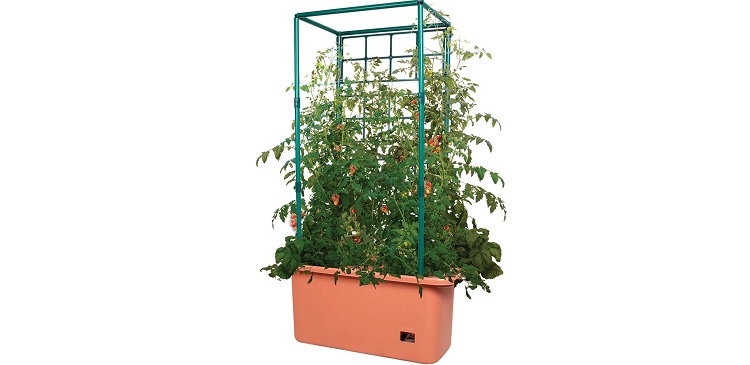
The Hydrofarm GCTR 10-Gallon Tomato Garden Planting Growing System is just ideal if you are growing tomatoes, beans, and other plants and vegetables that climb. Measuring 11 by 25 by 9 inches () inside, this planter holds up to 10 gallons () of soil or growing medium, allowing you to plant many tomatoes.
It also comes with a trellis tower that can expand up to four feet () tall. The trellis supports the climbing plants so that they thrive even with less care.
Because the plant doesn’t have to worry about supporting the vines, it can focus on producing more fruit. The easily accessible reservoir can be filled with water and liquid fertilizer, so your plants can have all the moisture they need.
Hydrofarm's self-watering planters provide lightweight, strong support for tomatoes, beans, peas and other climbing plants and flowers. An easy-to-fill reservoir system delivers water and nutrients from below, helping avoid over or underwatering.
FAQs
Answer: You might think that sub-irrigation setups sound a lot like hydroponics. But there are differences .
Hydroponics implies that your plants get their nutrients from the water solution you use.
Sub-irrigation is a term that describes how the water is delivered to your plants.
Some people might say that the difference is in the absence of soil for hydroponics systems and the use of growing media for sub-irrigated systems. But there are hydroponics systems that use pebbles, coconut husk, and perlite.
These systems are passive sub-irrigation types, and the materials are only used for the structure and serve as the wick that will bring the water to the plant’s roots. The growing media doesn’t have nutrients, so the plants get their nourishment from the water.
On the other hand, hydroponics systems may be under-irrigated, or you might pour water on them from above.
Answer: We think that the term self-watering might be misleading. As the term itself connotes, a self-watering planter would not need you to put water in it.
It will have a way to check and see if the reservoir needs refilling and then replenishes the water to the needed level without you having to lift a finger.
As it is, sub-irrigated planters cannot do all that. Because of its low-tech nature, sub-irrigated planters will still need you to make sure that there is enough water in the reservoir. And if the level is below optimal, you will need to refill that tank.
Answer: Generally, you can plant anything in a sub-irrigated planter. If the plant you have in mind likes moist soil, it will thrive on a sub-irrigated planter.
For the most part, sub-irrigated planters work best for vegetables. But you can use it for flowering plants, herbs, and others.
The trick is to use a substrate or growing medium that is suited for your plant. You might want to use a porous substrate for succulents, cacti, or orchids because these plants don’t like to sit in moist soil all the time.
Vegetables such as cabbage, garlic, lettuce, tomatoes, and carrots that you can plant in a raised bed will do rather well in sub-irrigated planters. Just be sure that you get one that is big enough to accommodate these vegetables.
Houseplants such as peace lily, African violets, coleus, and Boston fern will likewise thrive on these planters, as well as your choice of annuals and perennials.
Grow Your Favorite Plants in a Sub-Irrigated Planter
Sub-irrigated planters are a godsend for those who like plants but do not have much free time to care for them. These planters help you ensure that your plants get all the water they need and avoid overwatering them at the same time. There are several options that you can buy, but you also have the option to make one on your own.

